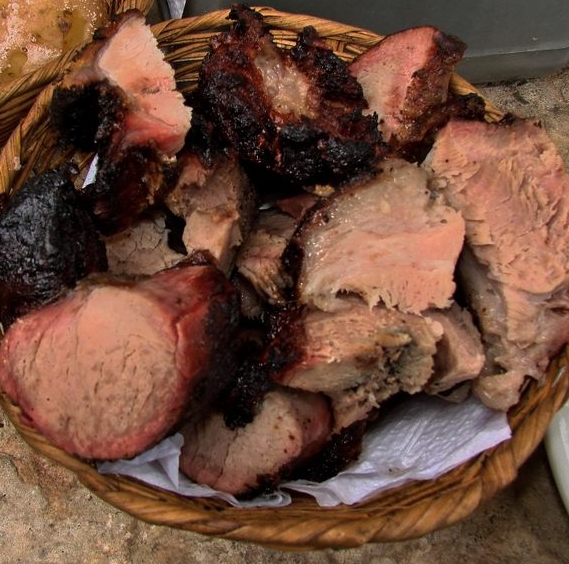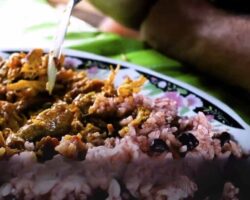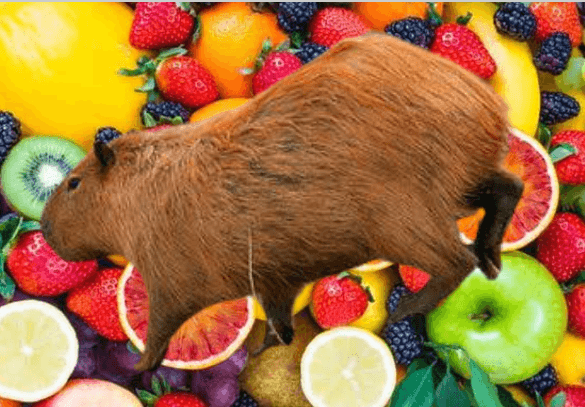Capybara, the world’s largest rodent, is a common sight in the wetlands of South America. Although it is not mainstream meat in most parts of the world, capybara meat is a popular delicacy in some regions of South America, particularly in countries like Venezuela, Colombia, and Brazil.
With its tender texture and unique flavor, capybara meat has become a sought-after ingredient in many traditional dishes of the region. In this article, we will explore the culinary uses of capybara meat, including how it is prepared, cooked, and served, as well as its nutritional value and cultural significance.
Whether you’re a food enthusiast looking to try something new or simply interested in learning about the exotic meats of the world, this article will provide you with a comprehensive guide to capybara meat and its culinary uses.
Capybara Meat: Characteristics and Nutritional Value
Capybara meat is a relatively uncommon source of protein that is widely consumed in certain regions of South America, particularly in countries like Colombia, Peru, and Venezuela.
Capybara is a large, semi-aquatic rodent known for its docile nature and distinctive appearance. Here are some of the characteristics and nutritional profiles of capybara meat:
Characteristics:
Capybara meat is typically lean and tender, with a texture similar to pork or beef. The flavor of capybara meat is often described as mild and slightly gamey, with a hint of sweetness.
The color of capybara meat ranges from light to dark red, depending on the age and diet of the animal. The fat content of capybara meat is relatively low, with only about 2-3% fat by weight.
Nutritional Profile:
Capybara meat is a rich source of protein, with about 28-30 grams of protein per 100 grams of meat. It is also a good source of essential amino acids, including lysine, methionine, and tryptophan.
Capybara meat is relatively low in calories, with about 145-150 calories per 100 grams of meat. Moreover, it is a good source of iron, with about 3-4 milligrams of iron per 100 grams of meat. It also contains significant amounts of other minerals, including zinc, phosphorus, and potassium.
While capybara meat can be a good source of protein and other nutrients, it is important to note that it is not commonly available in many parts of the world and may be difficult to find even in South America.
Additionally, due to the rarity of the capybara and its status as a semi-aquatic rodent, some concerns exist about its sustainability as a food source. If you can try capybara meat, it is recommended to ensure that it is sourced sustainably and cooked thoroughly to reduce the risk of foodborne illness.

I must clarify that Capybaras are semi-aquatic mammals and are considered the world’s largest rodents. In most countries, they are not a common food item, and some jurisdictions have laws protecting them.
That being said, capybara meat has been consumed in some parts of South America and may have different variations depending on the cooking methods and preparation techniques used. In general, capybara meat has a red or dark brown color and is leaner than most domestic meats.
In terms of texture, capybara meat is typically described as tender and has a firm bite similar to pork, with some reports of being slightly chewy or tough. The flavor of capybara meat is said to be mild and has been compared to beef or pork, with some slight gaminess.
It is important to note that due to the relative rarity of capybara meat consumption, it may be challenging to obtain and cook correctly, and it is crucial to ensure the meat is obtained and prepared legally and safely.
What Is The Nutritional Content of Capybara Meat?
Capybara meat is a good source of nutrition, with a composition that varies slightly based on factors such as the animal’s age, sex, and diet. On average, 100 grams of cooked capybara meat contains:
Protein: 26.4 grams
Fat: 1.8 grams
Minerals:
- Calcium: 6 milligrams
- Iron: 1.2 milligrams
- Magnesium: 24 milligrams
- Phosphorus: 182 milligrams
- Potassium: 360 milligrams
- Sodium: 71 milligrams
- Zinc: 3.5 milligrams
Capybara meat is also a good source of vitamin B12, with 100 grams of cooked meat containing 3.3 micrograms of this essential nutrient. Additionally, capybara meat is a good source of niacin, riboflavin, and thiamin.
How Much Does Capybara Meat Cost?
The cost of capybara meat varies, depending on the size and the availability of the meat in the region. Typically, the price of capybara meat is high in most countries. Averagely a pound of capybara meat costs $5.
Capybara meat is in high demand in Panama, Brazil, Venezuela, Costa Rica, Argentina, and other South American countries.
Comparison of capybara meat with other commonly consumed meats.
Capybara meat is not commonly consumed in most parts of the world. Still, it is a traditional food source in some countries in South America, such as Brazil, Colombia, and Venezuela.
Compared to other meats commonly consumed in many countries, capybara meat has similarities and differences.
Nutritional Value
Capybara meat is a good source of protein, iron, and vitamin B12. It is relatively low in fat, with about 2 grams of fat per 100 grams of meat, and is also low in calories.
In comparison, chicken and turkey are also good sources of protein, iron, and vitamin B12 but have slightly more fat content than the capybara. Beef and pork have higher fat and calorie content than the capybara, with beef having the highest fat content among the four types of meat.
Taste and Texture
Capybara meat has been described as having a taste similar to pork but with a texture similar to beef. It is usually prepared by slow-cooking, which helps to make it tender and flavorful. In comparison, chicken and turkey have a milder flavor and tender texture, while beef and pork have more pronounced flavors and firmer textures.
Cultural Significance
In South America, capybara meat is a traditional food source that has been consumed for centuries. It is often prepared in stews or roasted over an open fire. In comparison, chicken, turkey, beef, and pork are widely consumed in many countries around the world and have varying cultural significance depending on the region.
Availability and Cost
Capybara meat is not widely available in most countries and is considered specialty meat. It can be difficult to find in stores and is often expensive when it is available. In comparison, chicken, turkey, beef, and pork are widely available in most countries and are generally more affordable.
Capybara meat has some nutritional benefits and is similar in taste and texture to beef and pork. However, it is not commonly consumed in most parts of the world and is considered specialty meat. Its availability and cost may limit its appeal to many consumers.
Culinary Uses of Capybara Meat
Capybara meat, which comes from the largest rodent in the world, is a popular source of protein in some regions of South America. Here are some of the culinary uses of capybara meat:
- Stew: Capybara meat can be used in a hearty stew, which is a popular way to prepare it in Brazil. The meat is cooked slowly with vegetables and spices until it is tender and flavorful.
- Barbecue: Capybara meat is barbecued on an open flame in some parts of Argentina. The meat is often marinated in a mixture of herbs, garlic, and lemon juice to add flavor.
- Sausages: Capybara meat can be ground up and turned into sausages, often served as a snack or appetizer in some South American countries.
- Empanadas: Capybara meat can be used as a filling for empanadas, a popular pastry snack in many Latin American countries.
- Jerky: Capybara meat can be cured and dried to make a flavorful jerky. This is a good way to preserve the meat for later use.
It’s worth noting that capybara meat is not widely available in many parts of the world, so it may be difficult to find if you’re outside South America. Additionally, some people may find eating rodent meat unappealing, so it’s important to consider cultural and personal factors before trying capybara meat.
Traditional Capybara Meat Recipes
Capybara meat has a unique flavor and texture, making it a popular ingredient in many traditional recipes. Stews are one of the most common ways to prepare capybara meat.
One popular recipe is the “capybara sancocho,” a hearty stew made with capybara meat, yucca, potatoes, and plantains. The meat is first seared and then added to the stew, which is simmered slowly over low heat for several hours. The result is a rich, flavorful stew perfect for cold winter nights.
Roasts are also a popular way to prepare capybara meat. In Argentina, for example, the capybara is often roasted on a spit over an open flame, which gives the meat a smoky, charred flavor. The meat is typically seasoned with salt and pepper and served with a side of chimichurri, a traditional Argentinean sauce made with parsley, garlic, and olive oil.
Barbecues, or asados, are another traditional way to prepare capybara meat in South America. In Brazil, for example, the meat is often marinated in a mixture of lime juice, garlic, and herbs before being grilled over charcoal. The result is juicy, flavorful meat that is perfect for outdoor gatherings and celebrations.
While capybara meat may not be as widely available as other types of meat, it is an important part of the traditional cuisine in many South American countries. Whether prepared in stews, roasts, or barbecues, capybara meat is a delicious and unique ingredient that is sure to delight adventurous food lovers.
READ MORE: Steps To Hunt And Catch Wild Capybaras Alive
Regional Variations in Capybara Meat Dishes

Although capybara meat is not as popular as beef or chicken, it is still an important source of protein in some regions, and it is enjoyed by many people who appreciate its unique flavor and texture.
The preparation of capybara meat varies from region to region, and cultural, geographical, and historical factors often influence it. Here are some examples of how capybara meat is prepared in different parts of South America:
- Brazil: In Brazil, capybara meat is commonly used in a stew called “caldo de capivara.” This dish is typically made with capybara meat, vegetables, herbs, and spices and is often served with rice or bread. In some regions, capybara meat is also grilled or roasted and served with a spicy sauce.
- Colombia: In Colombia, capybara meat is used in a dish called “chi guiro al horno.” This dish consists of capybara meat marinated in a mixture of lime juice, garlic, and cumin, then roasted in the oven. It is often served with yuca (a starchy root vegetable) and plantains.
- Venezuela: In Venezuela, capybara meat is used in a stew called “carne en vara.” This dish is made by skewering capybara meat and cooking it over an open flame. The meat is seasoned with garlic, onions, and peppers and often served with cornmeal cakes.
- Peru: In Peru, capybara meat is used in a dish called “pachamanca.” This dish is traditionally prepared by digging a pit in the ground, heating rocks in the pit, and then layering the rocks with marinated meat, vegetables, and herbs. The pit is then covered with earth, and the ingredients are cooked using the residual heat from the rocks.
Capybara meat dishes vary widely across South America, reflecting the diverse culinary traditions and cultural practices of different regions. While some people may find eating a large rodent unappealing, capybara meat is an important part of many South American communities’ diet and cultural heritage.
Contemporary Preparations of Capybara Meat in Gourmet Cuisine
While capybara meat is more commonly used in traditional dishes in South America, it has also appeared in gourmet cuisine in recent years. Chefs are experimenting with new and creative ways to prepare capybara meat, often using it as a substitute for more common meats like beef or pork.
Here are some examples of contemporary preparations of capybara meat in gourmet cuisine:
- Capybara Carpaccio: In this dish, thin slices of raw capybara meat are marinated in olive oil, lemon juice, and herbs, then served with arugula and shaved parmesan. The meat is delicate and tender, with a slightly gamey flavor that pairs well with the acidity of the marinade.
- Grilled Capybara Steak: This dish is a simple but elegant preparation of capybara meat. The steak is marinated in a mixture of soy sauce, garlic, and ginger, then grilled to perfection and served with roasted vegetables or mashed potatoes.
- Capybara Sausages: Capybara meat can also be used to make sausages, which can be grilled, roasted, or pan-fried. The sausages are often flavored with spices like cumin, coriander, and paprika and served with a side of sautéed onions and peppers.
- Capybara Ravioli: In this dish, capybara meat is ground and mixed with ricotta cheese and herbs, then stuffed into homemade ravioli. The ravioli is served in a creamy tomato sauce and topped with shaved parmesan and fresh basil.
While these gourmet preparations of capybara meat may be rare and more expensive than traditional capybara dishes, they offer a unique and flavorful option for adventurous eaters looking to try something new.
However, it’s worth noting that capybara meat is not widely available outside of South America, and it may be difficult to find in some parts of the world.
Health Benefits and Concerns of Capybara Meat Consumption
Capybara meat, a traditional dish in South America, has gained attention recently as a novel protein source due to its high protein content and low fat. However, like any other exotic meat, there are both potential health benefits and concerns associated with its consumption.
- High Protein Content: Capybara meat is a rich source of protein. A 3.5-ounce serving of capybara meat can provide up to 26 grams of protein for muscle growth and repair.
- Low Fat: Capybara meat is also low in fat. A 3.5-ounce serving of capybara meat contains only 2.3 grams of fat, making it a lean protein source.
- Rich in Essential Nutrients: Capybara meat is a rich source of essential nutrients like iron, zinc, and vitamin B12, which are essential for good health.
- Sustainable and Environmentally Friendly: Capybara meat is a sustainable and environmentally friendly protein source. Capybaras are herbivores, and they graze on grasses and aquatic plants, which helps maintain the ecological balance of their habitats.
Concerns of Capybara Meat Consumption
Below are the major concerns of capybara meat consumption:
- Mercury Contamination: Capybara meat may contain high levels of mercury, which is a toxic heavy metal that can accumulate in the body over time and cause health problems.
- Zoonotic Diseases: Capybaras, like any other animal, can carry zoonotic diseases, which can be transmitted to humans through the consumption of contaminated meat. Therefore, ensuring the meat is properly cooked before consumption is essential.
- Hunting and Poaching: Capybara populations have been declining in some parts of their range due to hunting and poaching for their meat and skin. Uncontrolled hunting can lead to the overexploitation of these animals and threaten their survival.

Potential Health Benefits of Consuming Capybara Meat
- Boosts Immune System: Capybara meat is a rich source of vitamin B12, which helps in the production of red blood cells and boosts the immune system.
- Aids in Muscle Building: Capybara meat is an excellent source of protein, which is essential for muscle growth and repair.
- Lowers Cholesterol Levels: Capybara meat is low in fat and can help lower cholesterol levels, reducing the risk of heart disease.
- Supports Brain Function: Capybara meat is a rich source of omega-3 fatty acids essential for brain function and can improve cognitive performance.
Capybara meat can be a good source of protein and nutrients, but it is essential to ensure that it is properly cooked and sourced sustainably. Like any other exotic meat, capybara meat should be consumed in moderation.
Additionally, its potential health benefits and concerns should be considered before making it a part of the diet.
Capybara Meat Production and Trade
Capybara meat production and trade refer to the hunting and farming of capybara, a large rodent native to South America, for its meat. Capybara hunting and consumption have a long history in some Latin American countries, and meat is considered a delicacy in many regions.
However, the practice has also faced controversy due to conservation and animal welfare concerns. Hunting of capybara in Latin America is legal in some countries, such as Venezuela, where it is considered a cultural practice. Still, it is illegal in others, such as Brazil and Colombia.
The hunting of capybaras is typically done with firearms or dogs and can occur in the wild or on private ranches. Capybara is often hunted for subsistence, but commercial meat hunting is also common.
Farming capybara for its meat is a growing industry in some parts of South America, with farms established in countries such as Venezuela, Colombia, and Peru. Capybara farming typically involves keeping the animals in large enclosures and feeding them a diet of grasses, vegetables, and fruits. The meat is then sold to markets and restaurants.
Regulations on capybara hunting and farming vary by country, with some nations implementing quotas to limit hunting and others establishing guidelines for treating and caring for captive capybaras.
International trade in capybara meat is limited but does occur, with some countries exporting the meat to markets in Europe and Asia. However, the impact of this trade on conservation and economic development in Latin America is a subject of debate.
Some argue that capybara hunting and farming can provide economic benefits to local communities and incentivize conservation efforts, while others argue that the practice can lead to overhunting and depletion of wild populations.
Capybara hunting and consumption have cultural significance in some Latin American countries, where meat is often consumed during festivals and celebrations. For example, capybara meat is a traditional dish in Venezuela during Christmas and New Year’s Eve. However, the practice has also faced criticism from animal rights groups and others who view it as cruel or unnecessary.
Capybara meat production and trade involve hunting and farming of capybara for its meat, a practice with cultural significance in some Latin American countries.
However, the practice is also controversial due to conservation and animal welfare concerns. Regulations on capybara hunting and farming vary by country, and the impact of international trade on conservation and economic development is a subject of debate.
Alternative Uses for Capybara Meat
In addition to its use as a food source, capybara meat has alternative uses in traditional medicine and as pet food. Capybara is believed to have medicinal properties in some cultures and is used to treat a variety of ailments, including high blood pressure, rheumatism, and arthritis.
Additionally, capybara meat is sometimes used as a source of protein in pet food, particularly for dogs and cats. Other products derived from capybaras include leather, fur, and bones.

Capybara leather is known for its durability and is used in the production of shoes, bags, and other leather goods. Capybara fur is also prized for its softness and is used to make clothing and accessories. Capybara bones can be used to make tools or ornaments.
There is also potential for innovative uses of capybara meat. For example, in bioengineering, capybara meat could be used as a scaffold for tissue engineering or as a source of stem cells. Additionally, capybara meat could be used to develop new pet food products, taking advantage of its nutritional properties and appealing to pet owners seeking novel protein sources for their pets.
Conclusion
Cmeat may not be the most common meat you will find in a typical grocery store or restaurant, but it is a delicacy that many cultures have enjoyed for centuries. Its unique flavor and texture make it a versatile ingredient that can be used in a variety of dishes, from stews and soups to sausages and even sushi.
While capybara meat may not be readily available in some parts of the world, it is still an important part of the culinary traditions of South America, where it is considered a valuable source of protein. However, it is important to note that capybara populations are declining due to habitat loss and hunting, and it is essential to protect these animals to ensure their survival.
In summary, capybara meat is a culinary treasure that should be appreciated and used responsibly. Whether you are a chef looking to experiment with new flavors or a food lover looking to expand your palate, capybara meat is worth exploring as a unique and flavorful ingredient.









